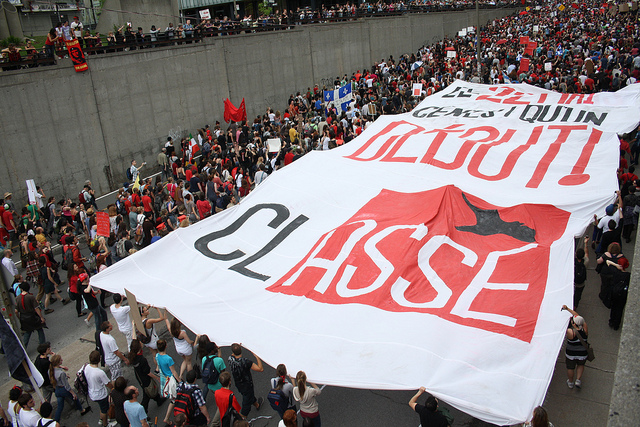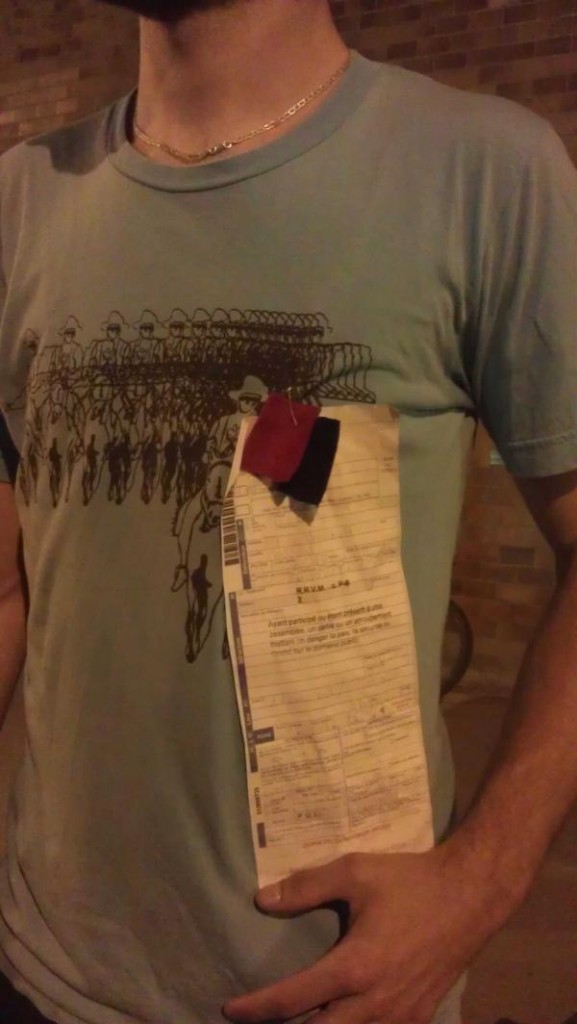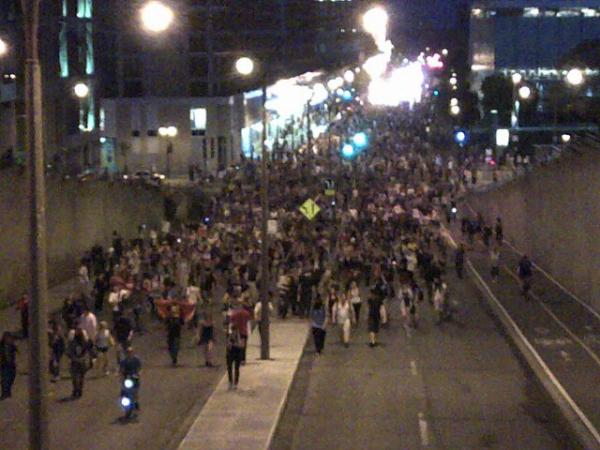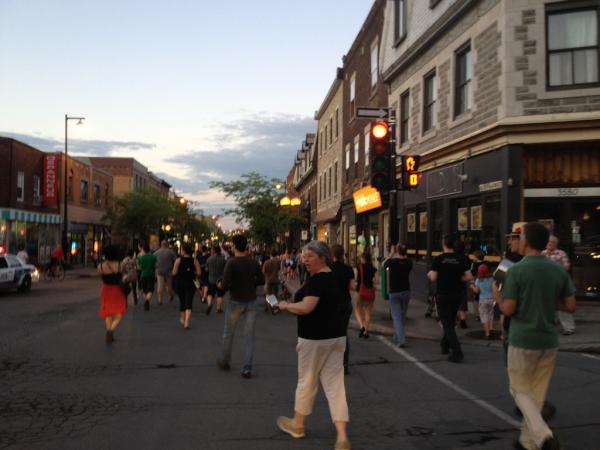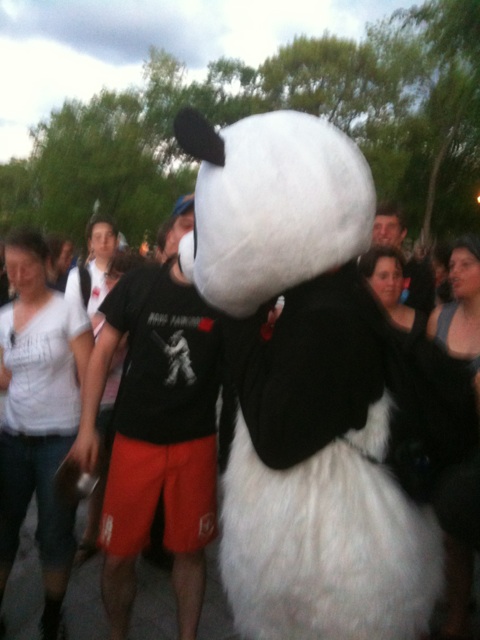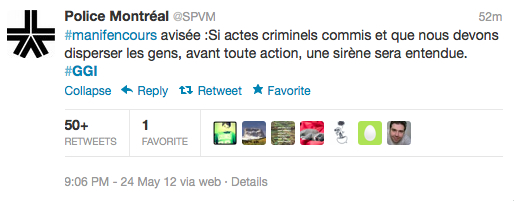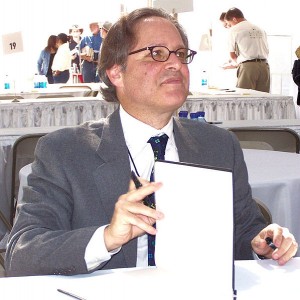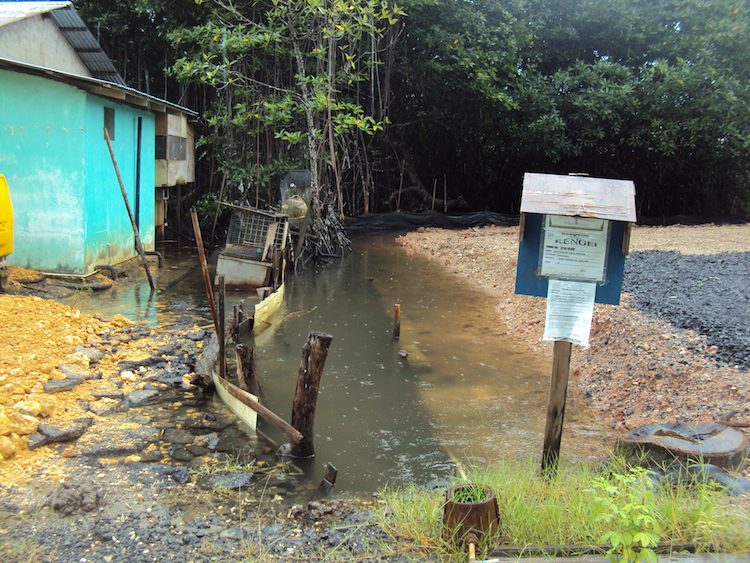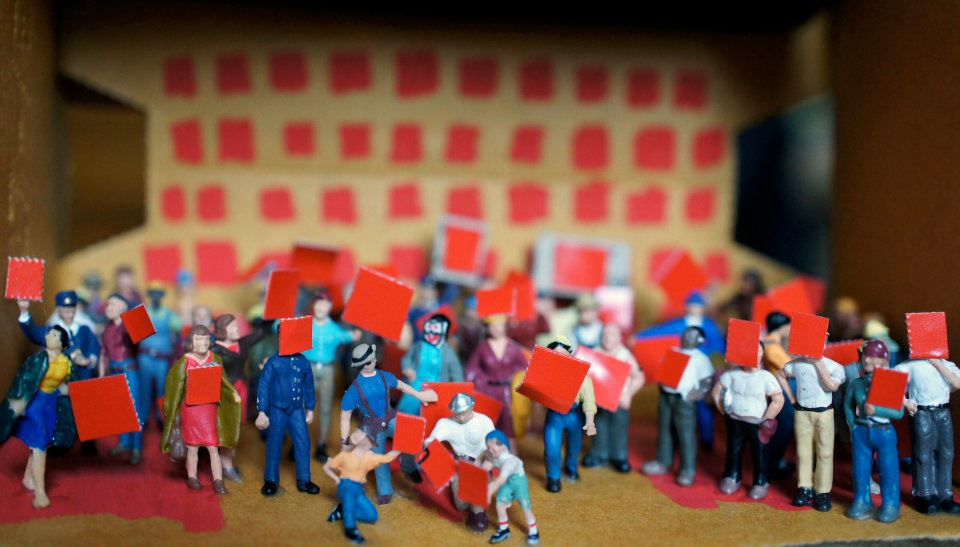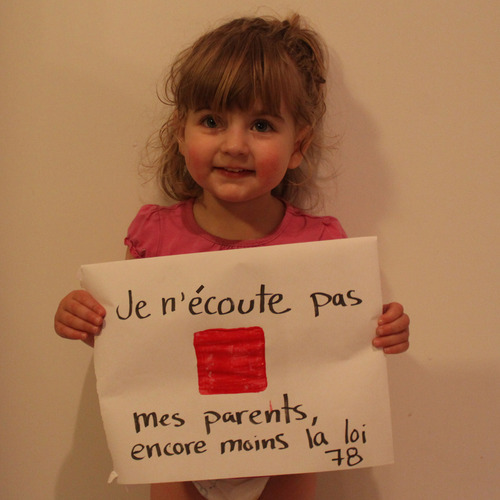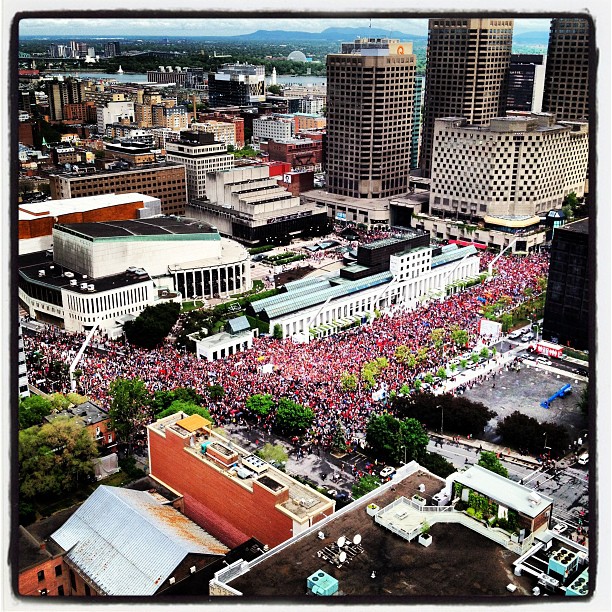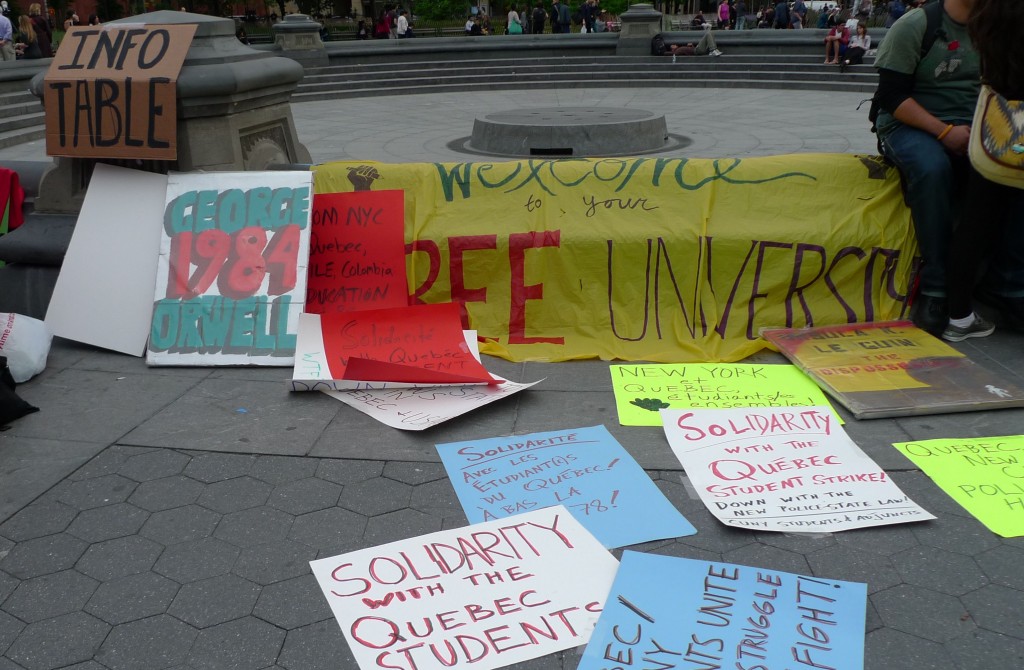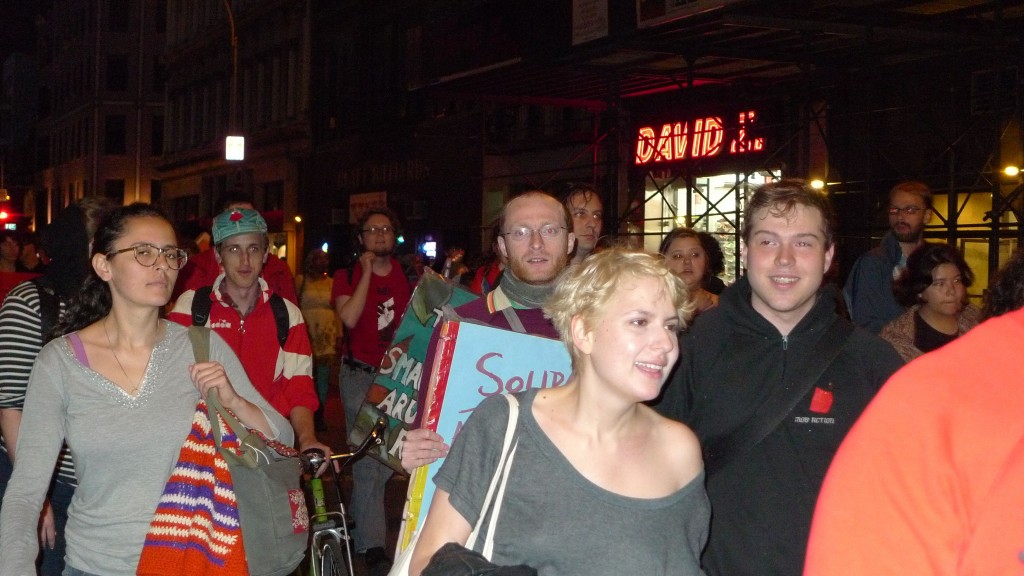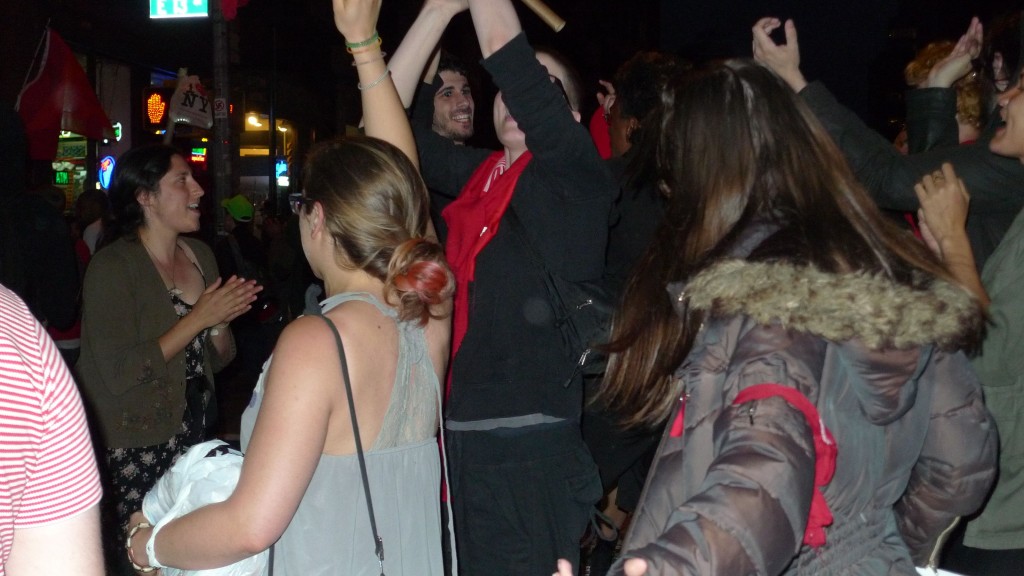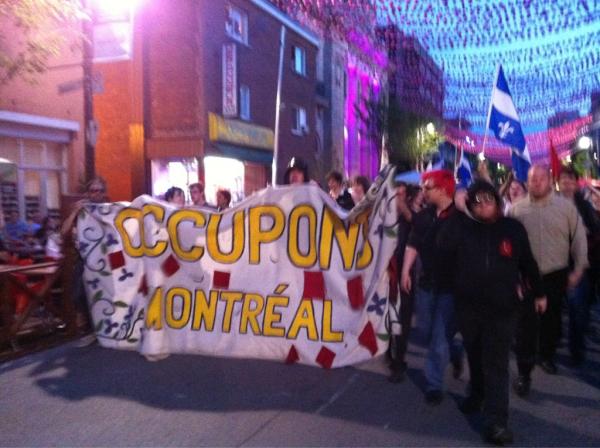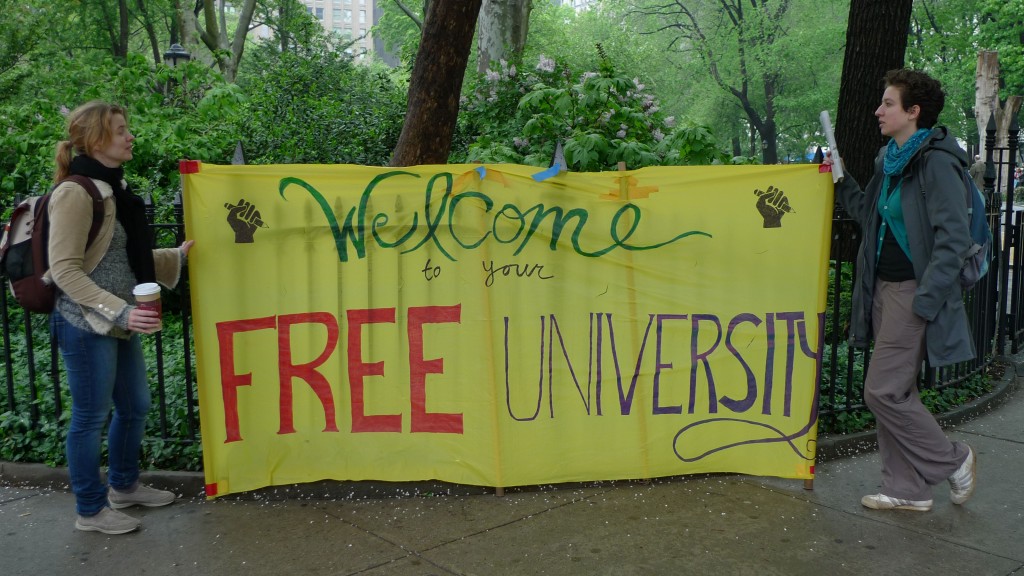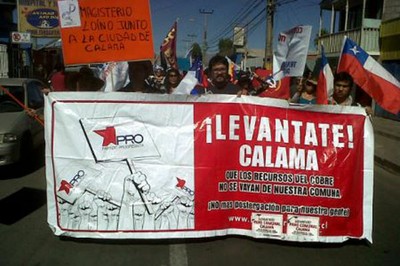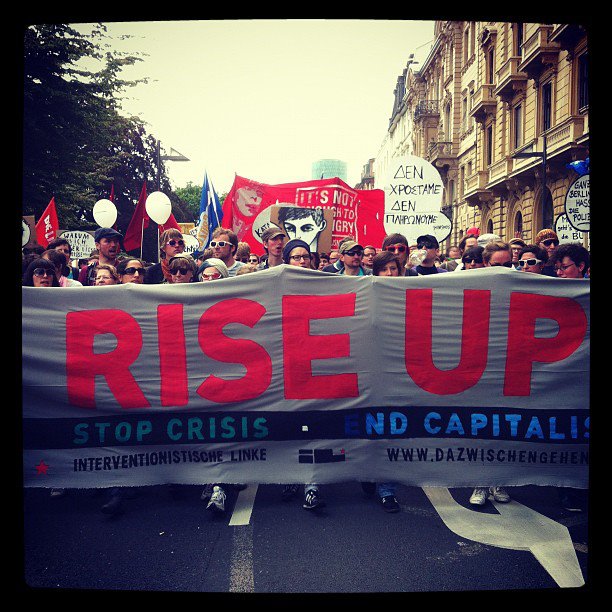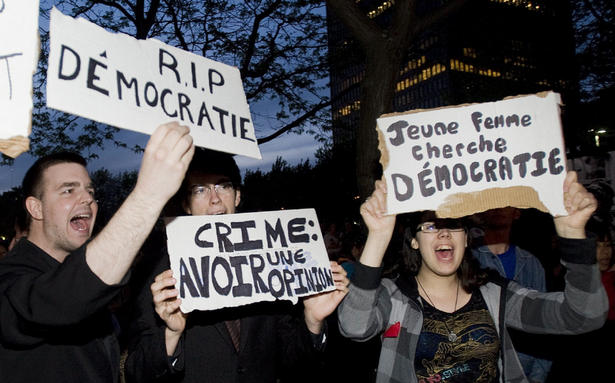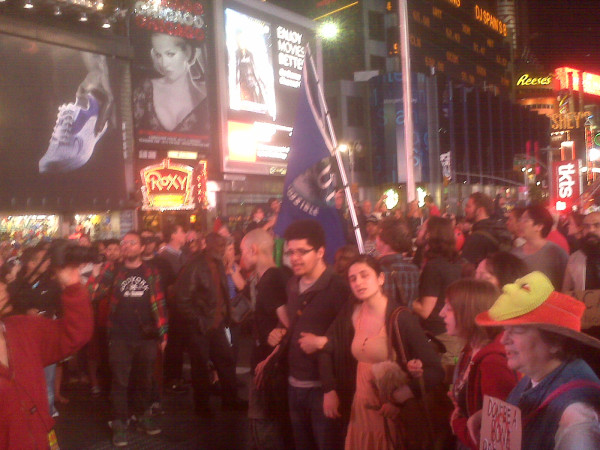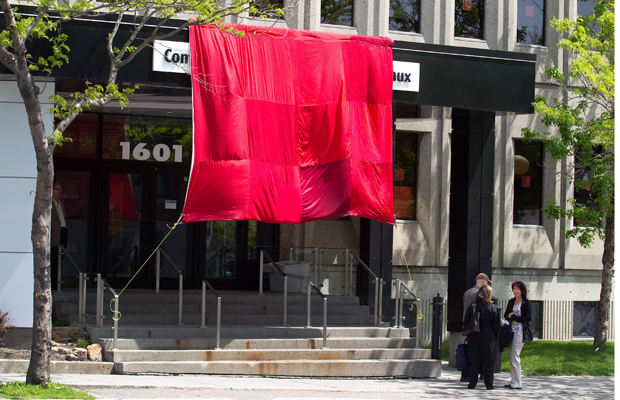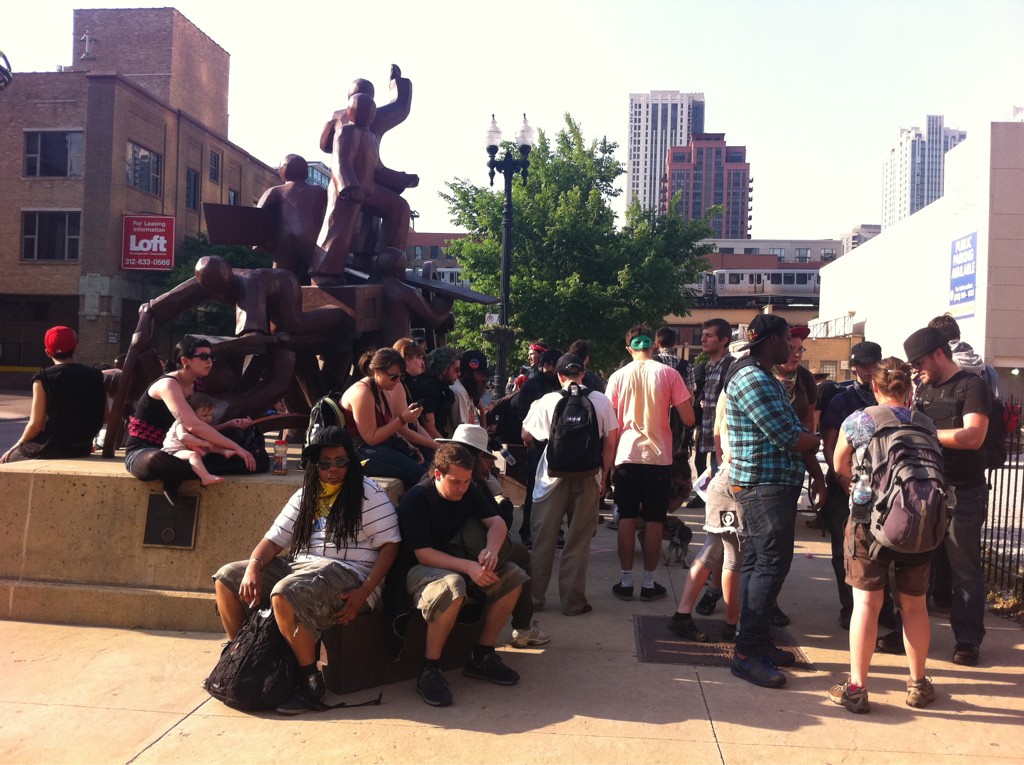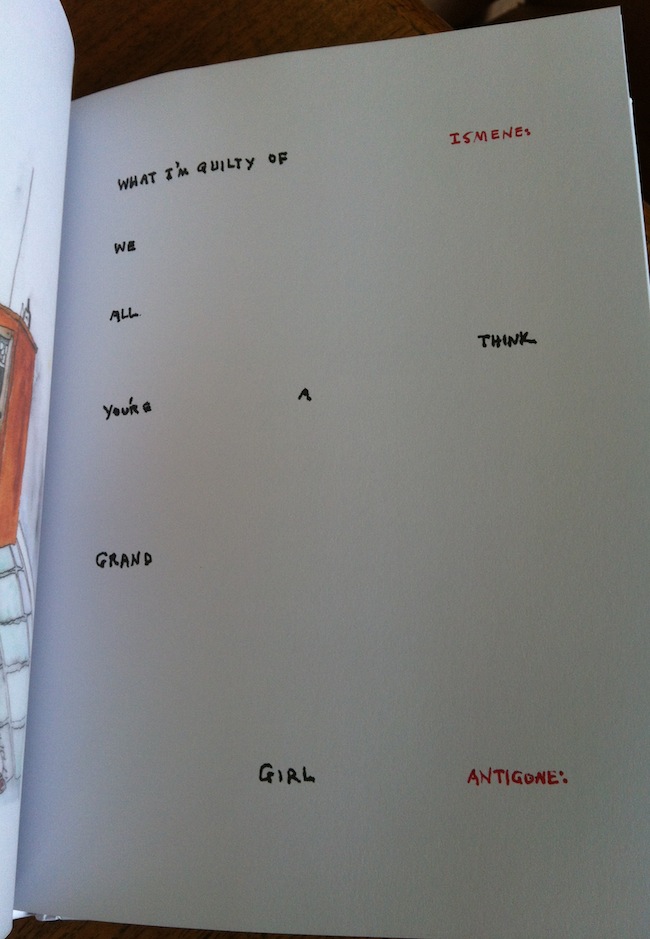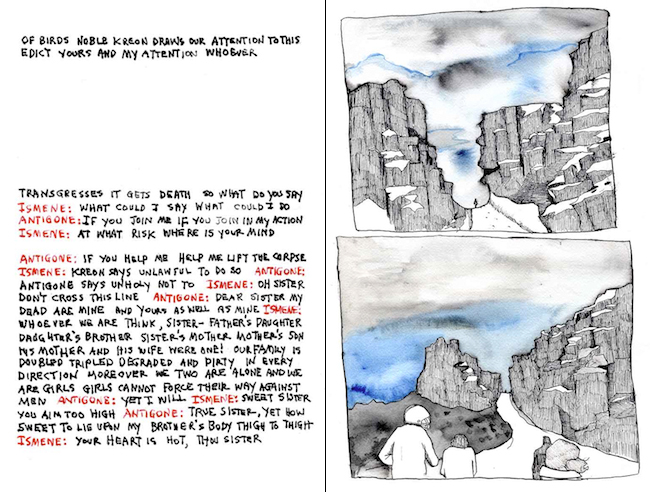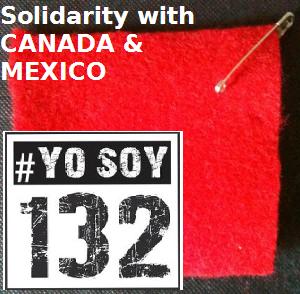 The new wave of global protest is inventing public space in global cities. Global capital likes space to be isomorphic and consistent–like a McDonalds hamburger, it should look, taste and feel the same wherever you actually happen to find yourself. In this world-view, there is no such thing as public space in global cities. The global precariat–meaning precarious workers, or everyone who doesn’t benefit from capital investment– is inventing it. It’s a globally mediated combination of certain sounds and certain actions. The “movement” is about learning how that goes and what to do about it.
The new wave of global protest is inventing public space in global cities. Global capital likes space to be isomorphic and consistent–like a McDonalds hamburger, it should look, taste and feel the same wherever you actually happen to find yourself. In this world-view, there is no such thing as public space in global cities. The global precariat–meaning precarious workers, or everyone who doesn’t benefit from capital investment– is inventing it. It’s a globally mediated combination of certain sounds and certain actions. The “movement” is about learning how that goes and what to do about it.
Since 2011 we’ve seen a wave of efforts to reimagine bodies, spaces and lives resistant to, or outside of, the flows of finance capital. The first tactic was “take the squares,” a specific effort to reinvent the space of circulation into one of belonging. It flowed from Tahrir to Sol, Syntagma, Zuccotti, St Paul’s, Pershing and many more. Zuccotti was the exception that proved the rule, a fragment of striated space in the frictionless smooth zones of hyperpoliced finance capital’s capital. Otherwise these spaces were well-known locations in historic centers of power. As such, they were in many cases all too easy for determined police to retake with the obvious exception of Tahrir. Indeed, since the revolution, the military regime has isolated the revolution “in” Tahrir, that is to say, the conceptual space of the movement.
So when we say that the movement is about “bodies in space,” we’re saying a set of interrelated things that we’re learning to understand as we go along:
- That the body is any body, not one (un)marked by codes of ethnicity, race, gender, able-ism, sexual orientation etc.
- That this body “moves,” both literally in the ways that it can depending on its age, capacities and desires, and also conceptually in that it refuses to stay in its “place,” the place allocated to it by authority.
- That this movement, which is also a refusal to “move on” as the police want us to do, invents mediated public space that did not previously exist, whether by occupying, marching, dancing, or displaying.
- That this movement is not any movement whatever but has a rhythm, one that is altogether different to the metronomic beat of capital’s 1-2-3-4.
- That this rhythm reclaims and invents the time that gives the new public space dimension.
- That these interactions are disseminated globally by video/photo/MP3 using social media and that this mediation is constitutive of resistant global space.
- It is unlimited/illimité/ilimitado.
In this video from Montréal that everyone loves, you can see this process at work. Filmed two days ago, edited yesterday, a global talking point today:
What if you don’t happen to have a thousand people available? Since 2008, the Spanish anti-capitalist activist collective flo6x8 have been reterritorializing the “any space whatever” of global capital. They use Spanish regional music and dance to disrupt its smooth flow with rhythms and sounds that cannot help but recall their North African origin.
Yesterday they intervened at a branch of Bankia, the nationalized amalgam of savings banks (thanks to Matthew Bain for pointing this one out to me). Bankia announced that the 11 billion euro bail out they need is more like 19 billion. While this sum may seem minimal to those of us accustomed to the staggering amounts handed over to US and UK banks, in Spain, caught as it is between falling revenues due to the crisis and European Union-mandated austerity, this is a real number. flo6x8 adapt a flamenco to lament this and to draw bank customers into their dance:
Here, just for fun, is an action from February this year in Barcelona, where the bank customers really get into it:
OWS is starting to work in this frame. It’s important to point out that the Spanish actions have roots in the long anti-fascist struggle and the depth of Spain’s financial crisis since 2008. Canadian organizers have been pointing out that their student strike is the result of two years hard work and the historical situation of Quebec.
The “New York” that is imagined as the epicenter of neo-liberal finance capital has visualized itself outside of historical space and time since its neo-liberal reinvention in the 1980s. Activist movements have been localized and divided. So OWS was, as many have pointed out, enabled in considerable part by the global experience and diversity of its activists. We still have much to learn.
Starting today, OWS is holding Summer Disobedience School at a variety of locations in Manhattan, combining non-violent direct action training with skill shares and teach-ins.
I’m going to go even though I don’t do many of the disruptive direct actions because what the rhythm of the movement from Montreal to Mexico City is teaching me is simply that we have a lot to learn.

